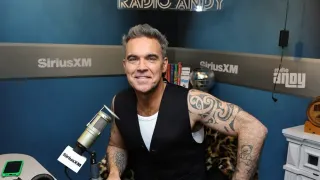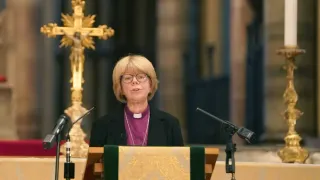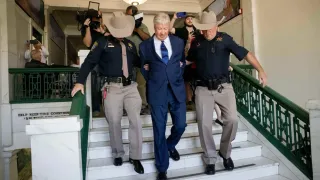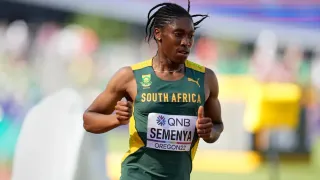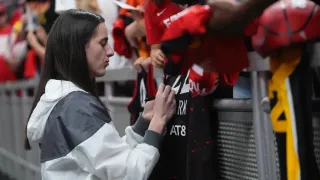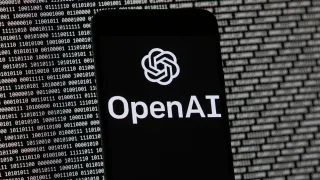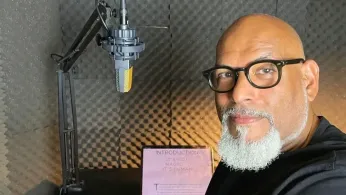
Oct 2
John Amaechi Reflects on NBA Culture and the Lingering Silence Around LGBTQ+ Players
READ TIME: 4 MIN.
John Amaechi, whose 2007 memoir "Man in the Middle" made him the first former NBA player to publicly come out as gay, has once again placed the spotlight on the uneasy relationship between men’s professional basketball and LGBTQ+ visibility. In a wide-ranging podcast conversation released this week, Amaechi explored why, nearly two decades after his own coming out, the NBA remains without any current, publicly out gay or bisexual players—a reality that continues to puzzle and frustrate advocates for inclusion .
Amaechi offered a frank assessment of how masculinity and heteronormativity continue to define NBA locker rooms and public personas. “What men do is important to other men. My understanding of straight men is that most of what straight men do is in order to attract the attention of other straight men,” he said, reflecting on the league’s enduring focus on heterosexual norms .
He noted that, while the NBA is “still very heterosexual,” shifting trends in fashion and culture have led to moments where “the league slips in its queerness every once in a while.” These moments, he suggests, may “confuse” some straight players and fans, revealing how the boundaries of acceptable masculinity—and what it means to be a man in professional sports—are in flux .
Despite the NBA’s reputation as one of the more progressive major U.S. sports leagues, Amaechi emphasized that the risks of coming out remain substantial. “The consequences of being queer in American society are still profound. They’re profound in a small town in Texas, and they’re profound if you’re on national television and half the sponsors of your team and certainly the owners are homophobic,” he explained. “So, there’s really practical reasons not to be out in America in a country that seems to want queer people to go the way of the dodo” .
This environment, according to Amaechi, creates a situation where many players may be “out” within their personal circles—among teammates, friends, or family—but have not made a public declaration. “There are players right now who are out in the same way I am. Some of their colleagues, some of their teammates, some of their administrative staff and some of their friends and some of their family will know that they’re gay, but they simply haven’t announced it on the Jumbotron,” he said .
Amaechi reflected on his own experience in the league, recounting both acceptance and the sting of casual homophobia. “There were a number players who knew because I told them, because they asked. For the most part, with one exception, when people asked me, I told them. And so a number of them knew and it was very much a shrug and not a big deal, and they treated me with kindness,” Amaechi recalled .
Yet, he also described a locker room culture steeped in “the ritual of masculinity,” where offhand comments—often not intended maliciously—could be hurtful. “Part of the ritual of masculinity diminishing women, diminishing gay people,” he said, drawing attention to the ingrained social practices that still marginalize LGBTQ+ identities, even in seemingly supportive environments .
Amaechi challenged the simplistic notion that absence from headlines equals life in the closet. “I would encourage people to have a more nuanced view of being in the closet. Just because you don’t know doesn’t mean that they’re in the closet,” he said. He shared that while he is widely known to be gay in some circles, entire generations or professional contexts may not be aware of his sexuality. Similarly, he argued, today’s NBA may quietly include out players whose identities are recognized in private, even if not on the public stage .
Amaechi, who played professionally in Europe as well as the U.S., also spoke to the international dimensions of homophobia in sport. He described “plenty of vociferous homophobia” in his European career, but noted that the less socially connected nature of European teams offered a different experience. “In the NBA you are just with each other relentlessly. In Europe… there’s just more time to be away from your team and away from each other’s company,” he explained. This separation, he suggested, could make both connection and confrontation less intense than in the close quarters of the NBA .
Amaechi’s insights point to ongoing challenges and the need for both cultural and structural change. The NBA has taken notable public steps in support of LGBTQ+ inclusion, including partnerships with advocacy organizations and public statements from high-profile allies . However, the absence of active, openly gay or bisexual players from the league’s rosters remains a testament to the deep-rooted fears and potential consequences facing those who might choose to come out.
Advocates argue that greater visibility, coupled with robust policies to protect players from discrimination, will be essential to creating a future where LGBTQ+ athletes can participate fully and authentically. As Amaechi’s reflections make clear, real progress will require not just institutional change, but a transformation in the rituals and norms that define masculinity and acceptance in professional sports .
For many LGBTQ+ fans and aspiring athletes, the silence in the NBA sends a powerful message about the state of acceptance in men’s sports. Amaechi’s willingness to speak openly about his experiences, and to advocate for a broader understanding of what it means to be “out,” continues to inspire conversations across generations. His story underscores the importance of representation, authenticity, and the ongoing struggle for equality—both on and off the court.
